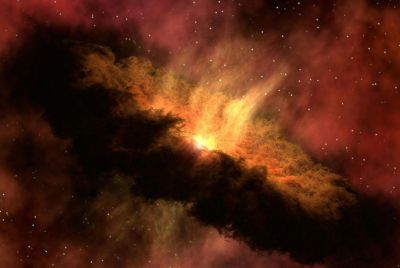Astronomers Discover Star Cluster That Is Surrounded By Black Hole

Astronomers from the NASA have discovered a cluster of young, blue stars encircling one of the first intermediate-mass black holes ever discovered, it was discovered with NASA's Hubble Space Telescope.
Nasa astronomers have discovered a cluster of stars encircling the black hole. The discovery of the black hole and the star cluster has important implications for understanding the evolution of super massive black holes and galaxies. They believe that the black hole may once have been at the core of a now-disintegrated unseen dwarf galaxy.
Astronomers know how massive stars collapse to form black holes but it is not clear how super massive black holes, which can weigh billions of times the mass of our sun, form in the cores of galaxies. One idea is that super massive black holes may build up through the merger of smaller black holes.
Astronomers have discovered a middleweight black hole called HLX-1. This black hole has an estimated weight of about 20,000 solar masses. It lies towards the edge of the galaxy ESO 243-49 which is 290 million light-years away from earth. Now they have discovered a cluster of stars encircling this black hole.
"Before this latest discovery, we suspected that intermediate-mass black holes could exist, but now we understand where they may have come from," said Sean Farrell from the Sydney Institute for Astronomy in Australia. "The fact that there seems to be a very young cluster of stars indicates that the intermediate-mass black hole may have originated as the central black hole in a very-low-mass dwarf galaxy. The dwarf galaxy might then have been swallowed by the more massive galaxy, just as happens in our Milky Way."
"What we can definitely say with our Hubble data is that we require both emission from an accretion disk and emission from a stellar population to explain the colours we see," he said.
© Copyright IBTimes 2025. All rights reserved.


















